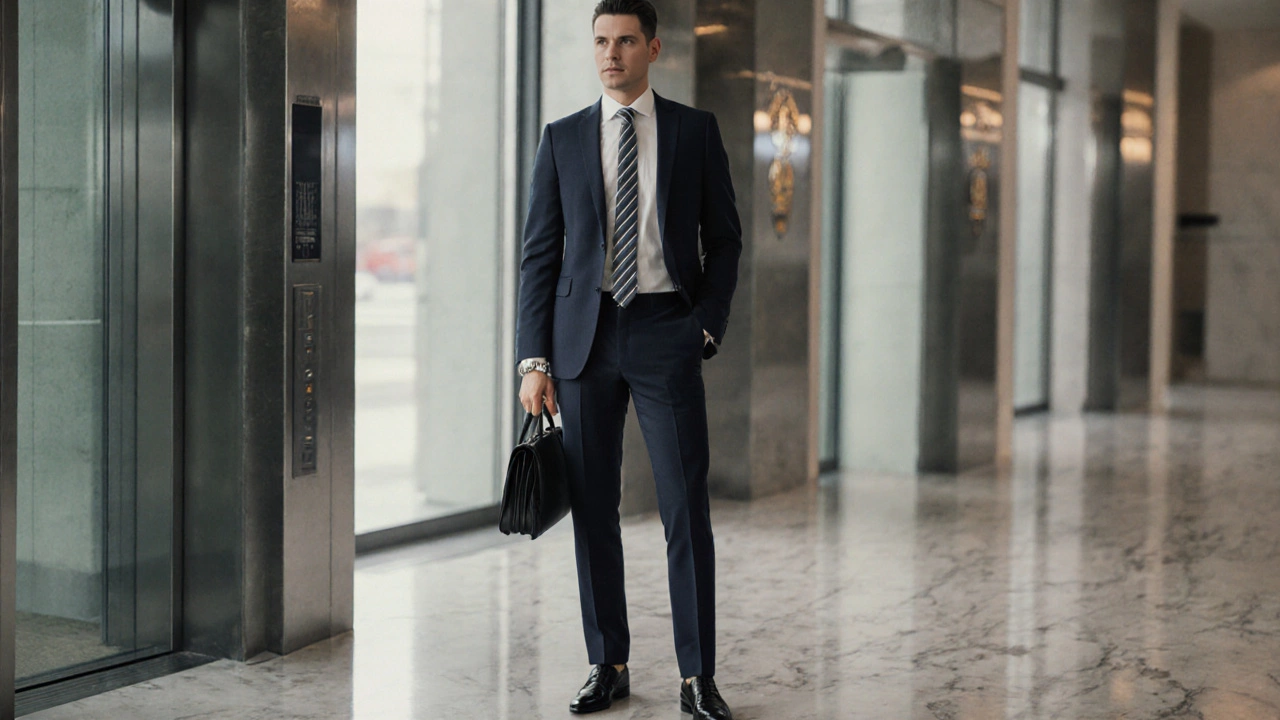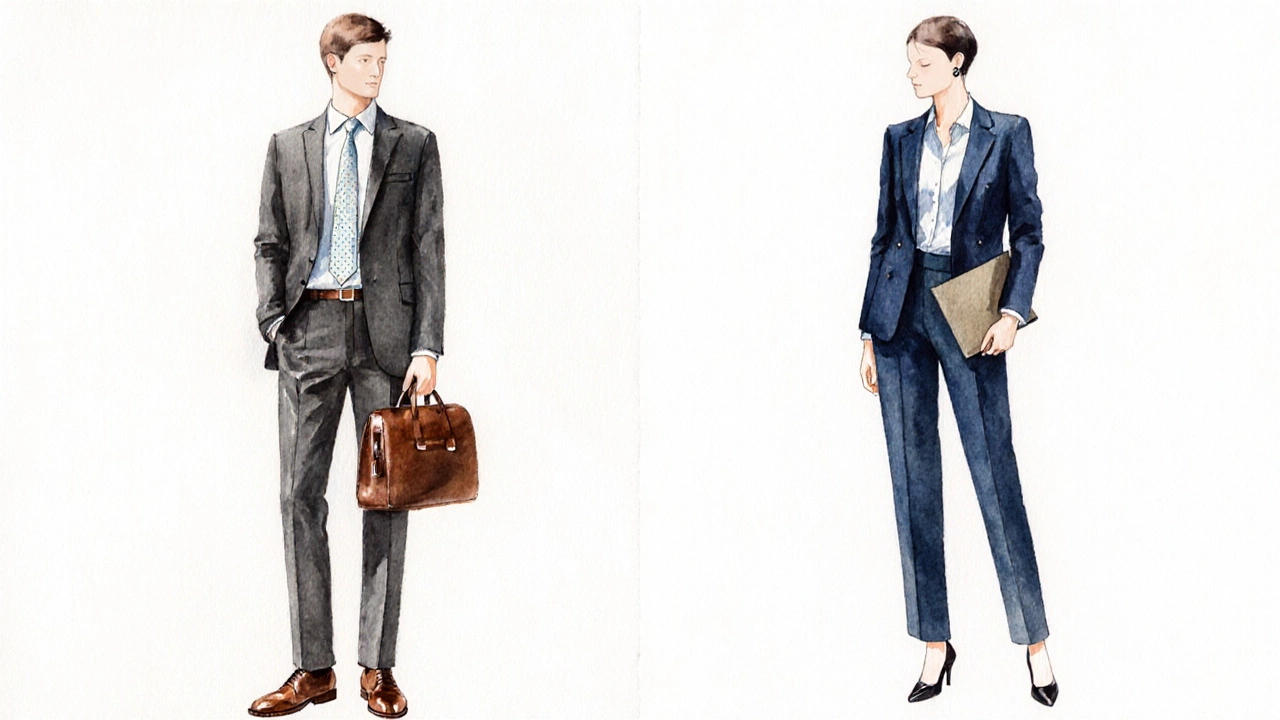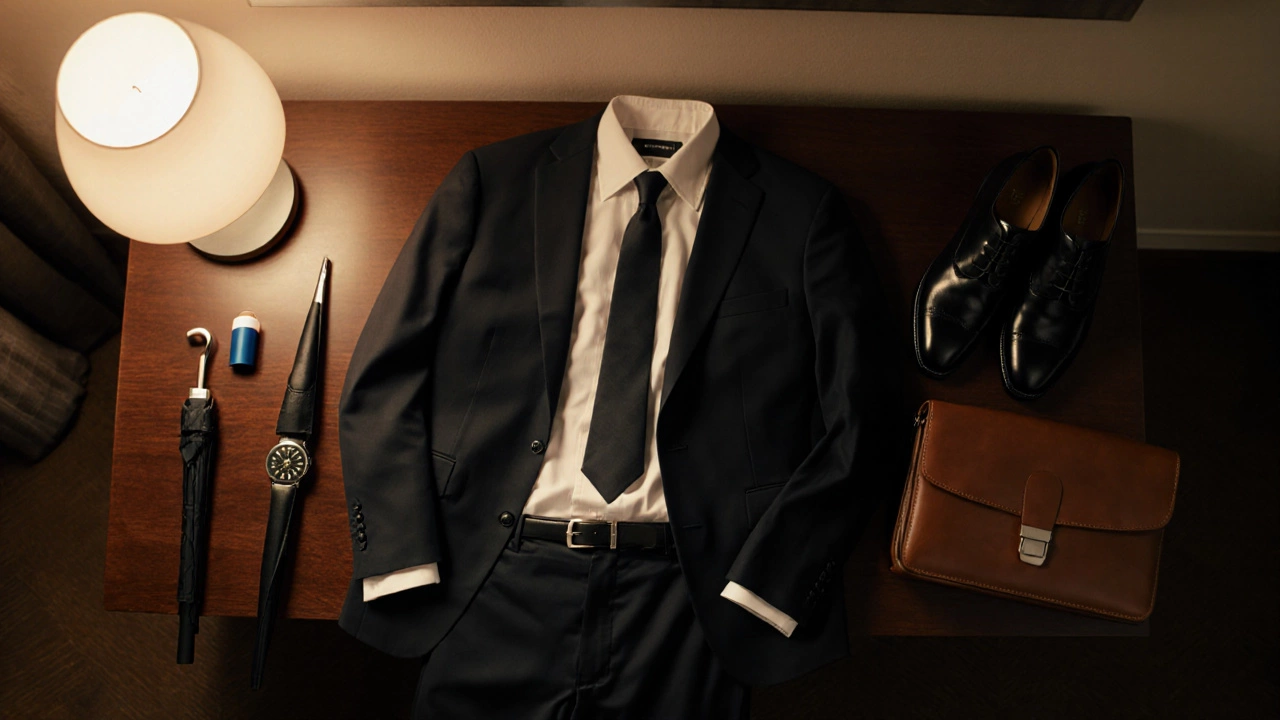What to Wear to a Government Job Interview: Dress Code Guide
 Oct, 8 2025
Oct, 8 2025
Government Job Interview Dress Code Checker
Outfit Assessment
| Aspect | Business Formal | Smart Casual |
|---|---|---|
| Suit | Dark wool suit (navy, charcoal, black) | Blazer with chinos or tailored trousers |
| Shirt/Blouse | White or light pastel dress shirt/blouse | Collared shirt or modest blouse, optional subtle pattern |
| Tie/Accessories | Conservative tie (men), minimal jewellery (women) | No tie required, simple accessories acceptable |
| Shoes | Polished leather Oxfords or pumps | Clean leather loafers or low-heeled shoes |
| Appropriateness | Ideal for central government, policy, and senior roles | Suitable for local authority, housing, or community-focused roles |
When you land a government job interview, the first thing on many minds is the interview dress code. Your outfit sends a silent message about professionalism, respect for the institution, and how seriously you take the role. Getting it right can boost confidence and make a solid first impression before you even answer the first question.
Key Takeaways
- Stick to government job interview attire that leans toward business formal; smart casual is acceptable for some agencies.
- Men: dark suit, light dress shirt, conservative tie, polished leather shoes.
- Women: tailored suit (pants or skirt), modest blouse, low‑heeled closed shoes, minimal accessories.
- Avoid strong patterns, loud colors, and anything that could be seen as overly casual.
- Research the specific department’s culture - some civil service roles are less formal, but it’s safer to err on the side of formality.
Understanding Dress Codes in the Civil Service
The UK civil service generally adopts two main dress standards:
- Business formal - a dark suit, tie (for men), and closed shoes. This is the default for most central government interviews.
- Smart casual - a blazer with tailored trousers or a knee‑length dress. Acceptable for some local authority or public‑sector roles where the work environment is less formal.
When unsure, call the HR contact and ask, “What is the recommended interview dress code for this position?” A brief query shows you care about details.

What to Wear: Detailed Checklist for Men
Every piece should be clean, pressed, and fit well. Here’s a practical list:
- Suit: Navy, charcoal, or black wool or wool‑blend. Avoid bright colors or flashy patterns.
- Dress shirt: White or very light pastel. Ensure the collar is crisp and the cuffs are long enough for cufflinks (if you use them).
- Tie: Subtle pattern (e.g., small dots or a simple stripe). Keep the knot neat - Windsor or Half‑Windsor works best.
- Polished shoes: Black or dark brown leather Oxfords or brogues. Match the belt to the shoe colour.
- Accessories: Minimal - a classic watch, a wedding band, and a plain leather briefcase or portfolio.
What to Wear: Detailed Checklist for Women
- Tailored suit: Matching blazer and trousers or a skirt (knee‑length or just below). Navy, charcoal, or black are safe choices.
- Blouse: Solid colour or very subtle pattern. Avoid low cuts and sheer fabrics.
- Closed shoes: Low‑heeled (≤2 inches) pumps or loafers. Black or navy leather is ideal.
- Accessories: Simple stud earrings, a thin chain necklace, and a modest handbag or leather folder.
- Makeup & hair: Natural tones, neat hairstyle, and no distracting jewellery.
Do’s and Don’ts: Common Pitfalls to Avoid
- Do arrive with your outfit fully pressed; wrinkles suggest a lack of preparation.
- Don’t wear jeans, sneakers, t‑shirts, or baseball caps - even if the agency’s daily dress is casual.
- Do keep scents subtle; strong colognes can be off‑putting in a closed interview room.
- Don’t over‑accessorize; a cluttered look distracts the interview panel.
- Do carry a tidy folder with copies of your resume, certificates, and a notepad.
- Don’t forget to check the weather - a smart umbrella and a water‑proof coat won’t ruin your suit.

Comparison Table: Business Formal vs. Smart Casual
| Aspect | Business Formal | Smart Casual |
|---|---|---|
| Suit | Dark wool suit (navy, charcoal, black) | Blazer with chinos or tailored trousers |
| Shirt/Blouse | White or light pastel dress shirt/blouse | Collared shirt or modest blouse, optional subtle pattern |
| Tie/Accessories | Conservative tie (men), minimal jewellery (women) | No tie required, simple accessories acceptable |
| Shoes | Polished leather Oxfords or pumps | Clean leather loafers or low‑heeled shoes |
| Appropriateness | Ideal for central government, policy, and senior roles | Suitable for local authority, housing, or community‑focused roles |
Frequently Asked Questions
Can I wear a dark dress instead of a suit?
Yes, a knee‑length dark dress paired with a blazer and closed shoes meets business formal standards. Make sure the cut is modest and the fabric isn’t too shiny.
Is a navy blazer acceptable for a civil service interview?
A navy blazer works for smart‑casual settings, but if you’re interviewing for a central department, pair it with tailored trousers and a crisp shirt to lean closer to business formal.
Should I bring a portfolio or a briefcase?
A sleek leather briefcase or a minimalist portfolio is ideal. Avoid oversized bags that can look cumbersome.
What if the interview is virtual?
Dress the same way you would for an in‑person interview. The upper half is visible, so a tidy shirt and blazer are essential; you can wear appropriate trousers even if they’re not seen.
Do I need a tie if I’m applying for a junior admin role?
It’s safer to wear a subtle tie. If the recruiter later says the office is very relaxed, you can remove it after the interview, but starting formal shows respect.
Next Steps: Your Pre‑Interview Dress Routine
- One week before: Confirm the dress code with HR and note any agency‑specific guidance.
- Six days before: Try on the full outfit, check fit, and make a list of any needed alterations.
- Three days before: Have the suit/shoes professionally cleaned and pressed.
- Day before: Lay out the entire look - shirt, tie, shoes, belt, briefcase - to avoid last‑minute scrambling.
- Morning of interview: Do a quick mirror check, ensure shoes are polished, and keep a lint roller handy.
By treating your attire as part of the interview preparation, you’ll walk into the room feeling confident, focused, and ready to showcase your skills.